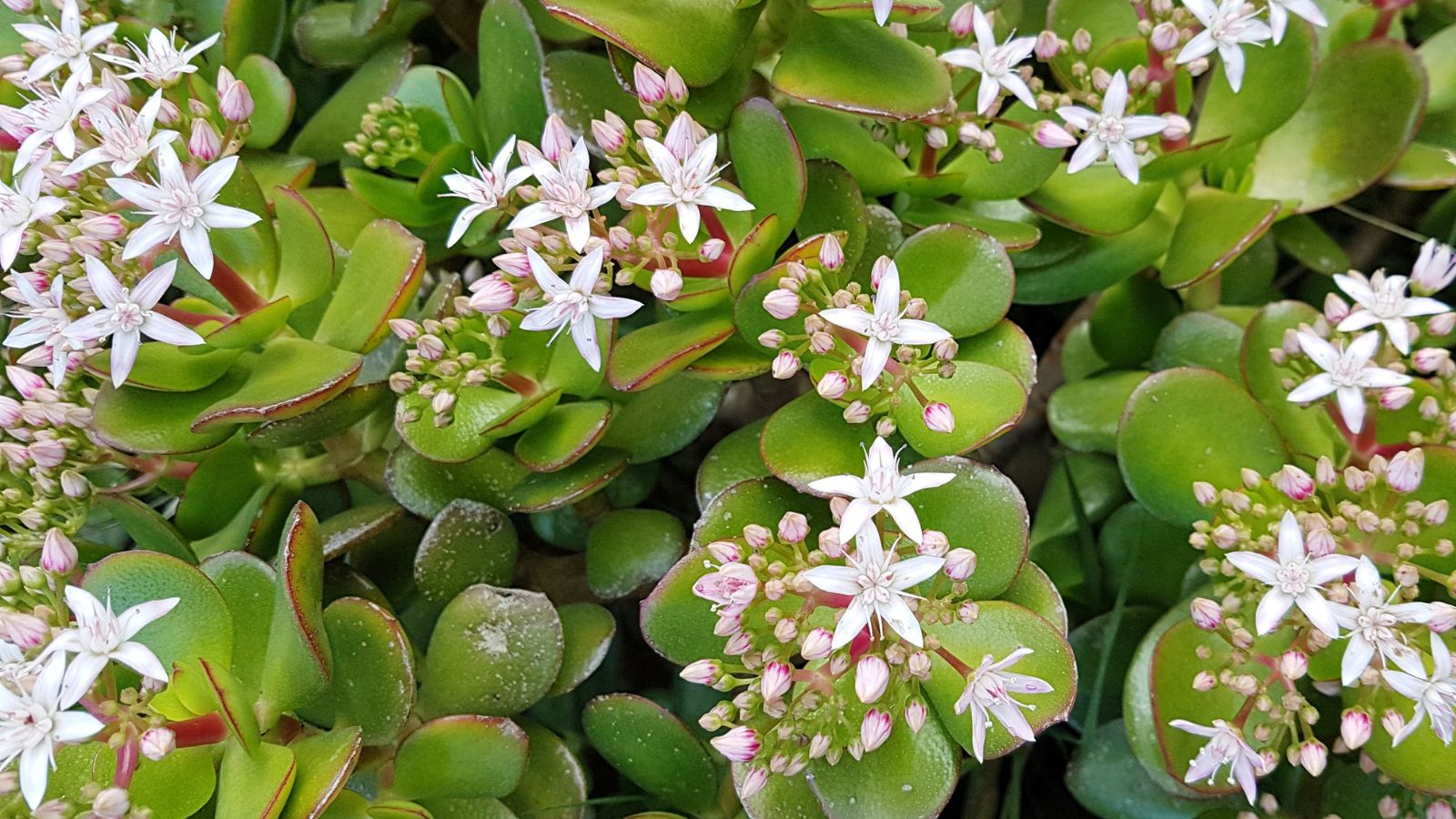
If you've noticed your jade plant drooping, it may be signaling that it’s unhappy. If the issue causing the problem is not addressed, your plant could be at risk of dying.
Identifying the cause of your plant's stress is simply a matter of learning the basics of how to care for your jade plant properly.
With the right adjustments to its care routine, you can revive your succulent pretty quickly. Below, we list out the reasons your jade plant might be drooping, with expert tips on how to fix it.
1. Underwatering
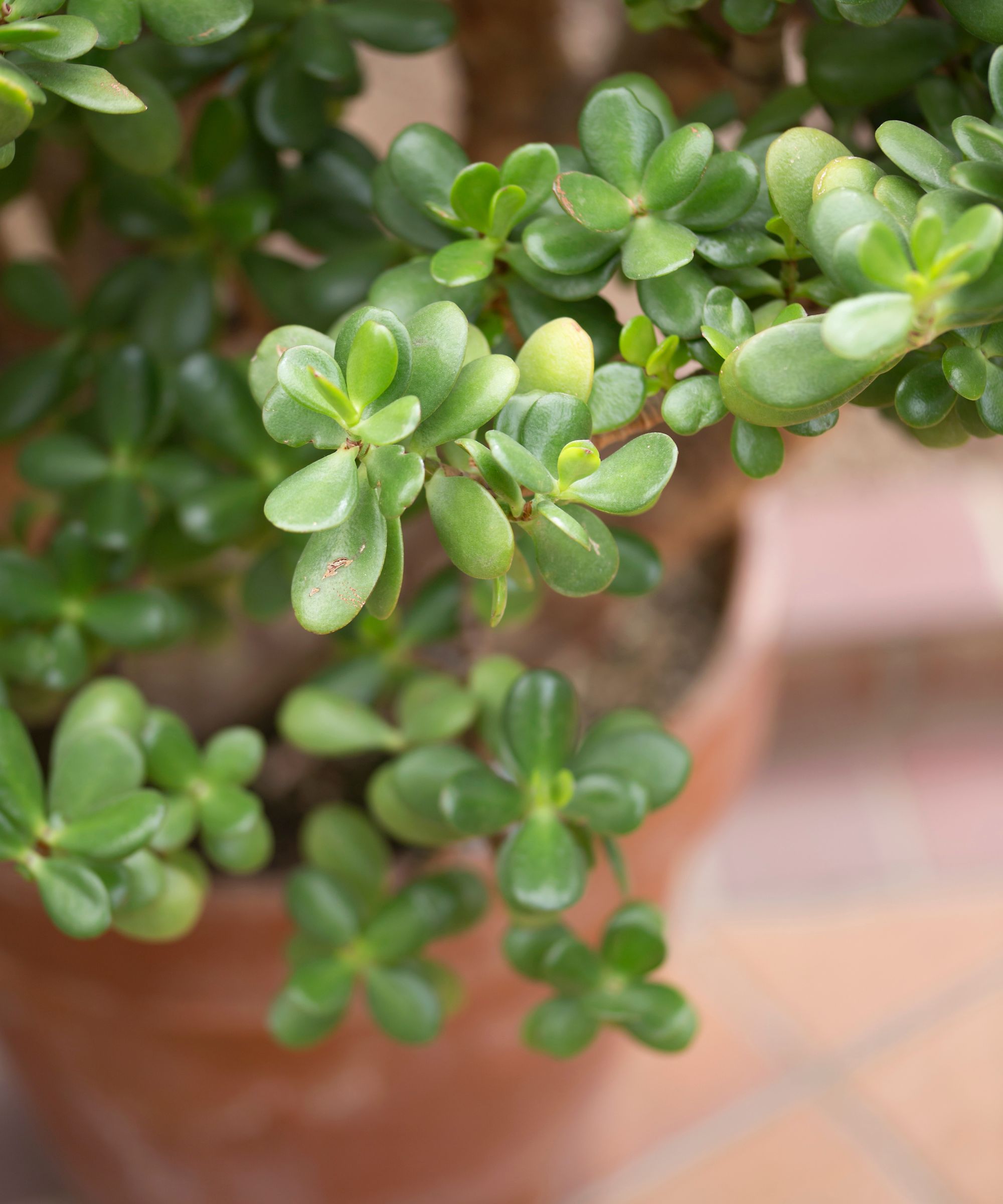
‘Typically, when you see a jade plant wilting, it’s telling you there’s a root issue,' says Justin Hancock, a horticulturist and houseplant expert from Costa Farms. 'One of these may be that the roots aren’t able to pull up enough moisture from the potting mix to support the plant.'
Jade plants are succulents, which means they store water in their branches and thick, fleshy leaves; if the plant is wilting or its leaves become soft, wrinkled, or floppy, it’s often a sign the water reserves of that plant are depleted.
If the plant's leaves are shriveled, adjust your watering routine until they regain their plumpness. Check the soil moisture by inserting your finger about an inch deep. If it feels dry, it’s time to water.
Be cautious, as jade plants are susceptible to root rot from overwatering. It's crucial to know how to water a jade plant properly to prevent this – water them deeply but less frequently, and ensure the soil dries out between waterings. Typically, you should water the plant about once every two weeks, depending on the season. In winter, it should be watered more sparingly to avoid soggy roots.
2. Overwatering and insufficient drainage
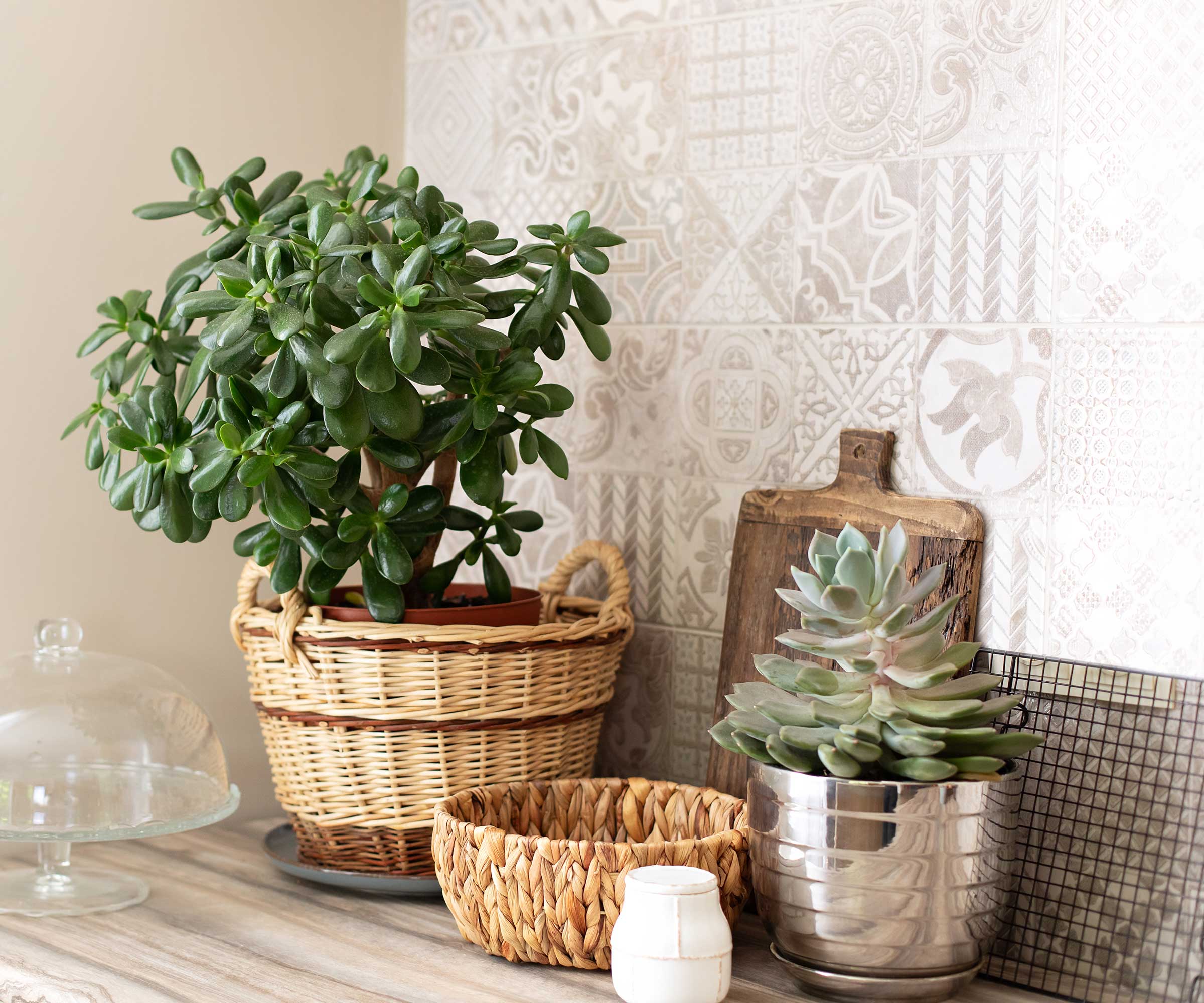
While wilting is often associated with a lack of water, jade plants can also wilt from overwatering.
Jade plants are quite drought-tolerant as they store water in their leaves and branches. Justin explains, 'When the plant is overwatered, the roots are deprived of oxygen, as too much water fills the air pockets in the soil, causing root rot.' This can reduce the amount of living root mass, preventing the plant from absorbing moisture properly.
It's best to water every two or three weeks during the growing season (spring and summer), only when the top inch or two of soil feels dry. In winter, when the plant's growth slows, reduce watering to about once a month or when the soil feels dry.
Misting the plant weekly can effectively keep it hydrated without soaking the roots, especially during colder months.
Another way to prevent overwatering is to ensure good drainage. Sophie Lee, author of Living with Plants: A Guide to Indoor Gardening, available from Amazon, recommends rehydrating jade without overwatering by watering from the bottom, placing the pot in a dish of water. This allows the plant to absorb moisture gradually, reducing the risk of soggy soil.
Additionally, choosing a well-draining soil will prevent water from pooling around the roots. A standard succulent or cactus potting mix containing ingredients like sand, perlite, and peat is ideal. We recommend this Miracle-Go potting mix from Walmart.
3. Insufficient light
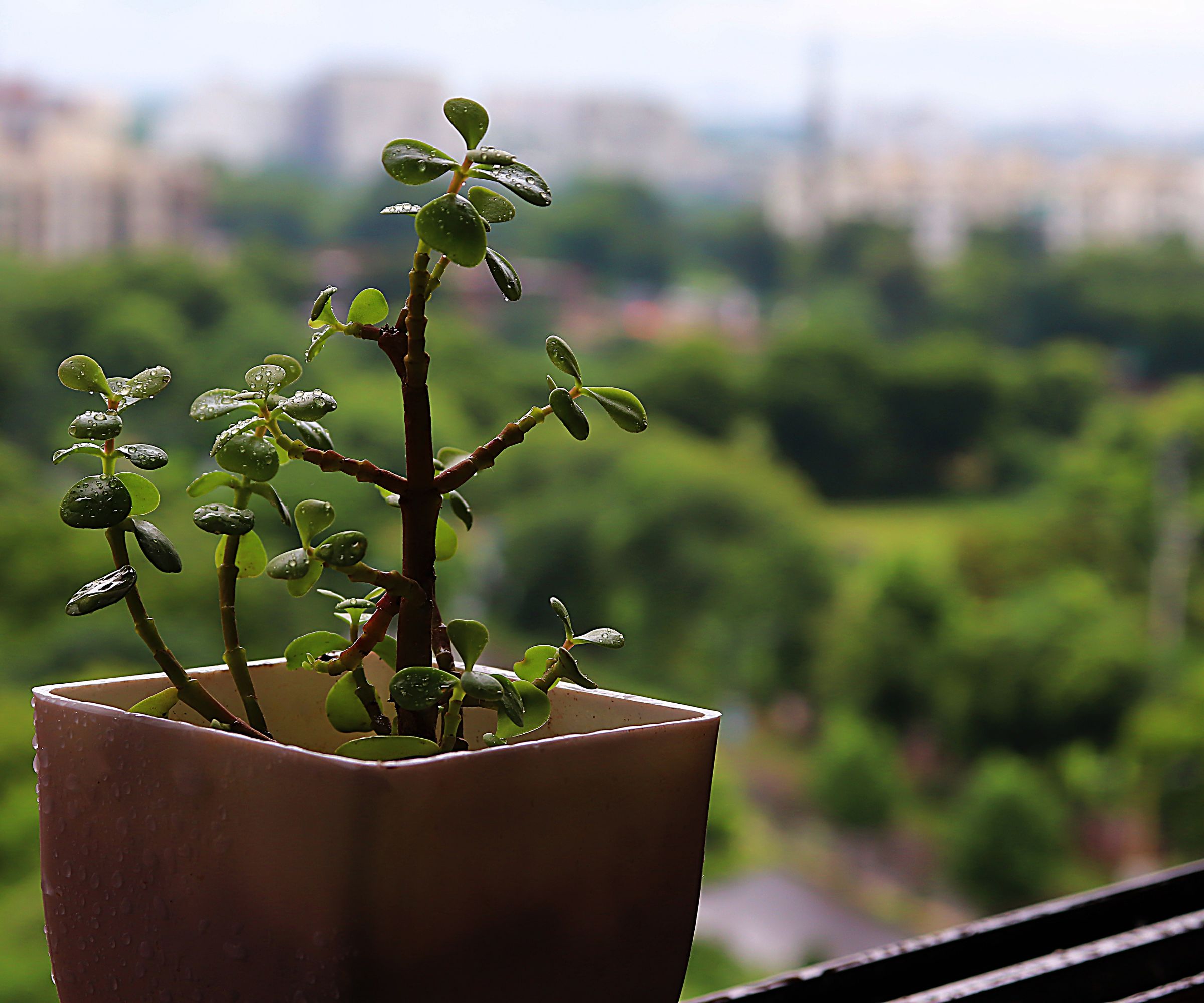
Jade plants are native to South Africa and thrive in bright conditions. Insufficient light is a common cause of leggy growth and drooping leaves, as these plants stretch out to find more sunlight. If you notice your plant growing leggy, it’s a sign it’s not getting enough light and it may need to be moved to a brighter spot
While jade plants tolerate direct sunlight, too much exposure can cause the leaves to scorch, so it's best to find a balance.
To keep your jade plant healthy and prevent drooping, place it in a location where it can receive bright, indirect sunlight for at least four to six hours a day. A sunny windowsill that gets filtered light is ideal. Window films, such as this one from Amazon can filter sunlight effectively, allowing light to pass through but block out the intense UV rays, providing a gentler light for your plant.
4. Nutrient deficiency
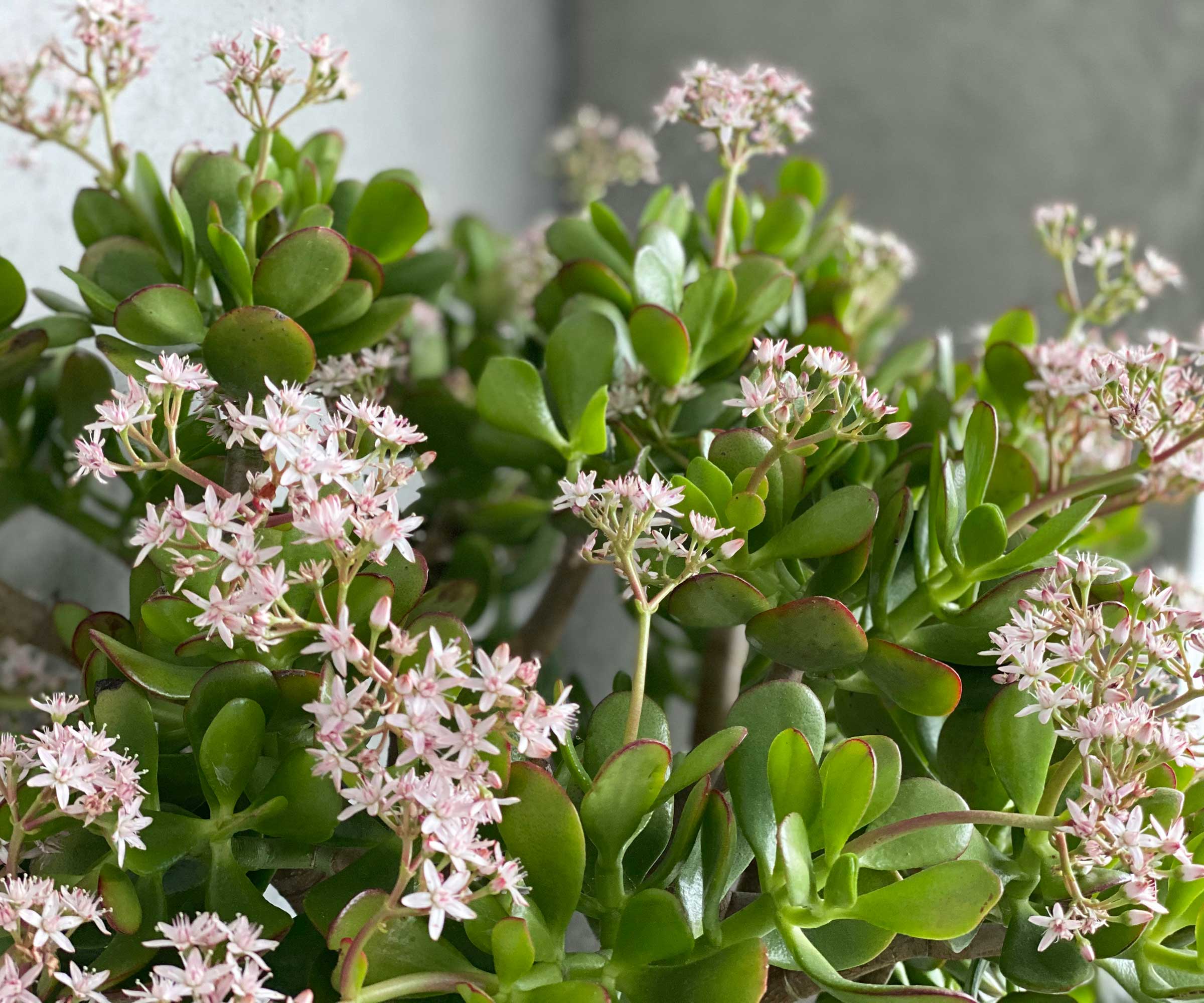
While jade plants are low-maintenance and don’t require frequent feeding, a lack of essential nutrients, particularly nitrogen, potassium, or phosphorus, can lead to poor growth and wilting leaves.
Add a water-soluble fertilizer diluted to half strength once a month during the growing season (spring and summer) to prevent nutrient deficiencies. This Miracle-Go water-soluble fertilizer from Walmart has 4.7 stars from over 1,000 reviews.
5. Overfertilization
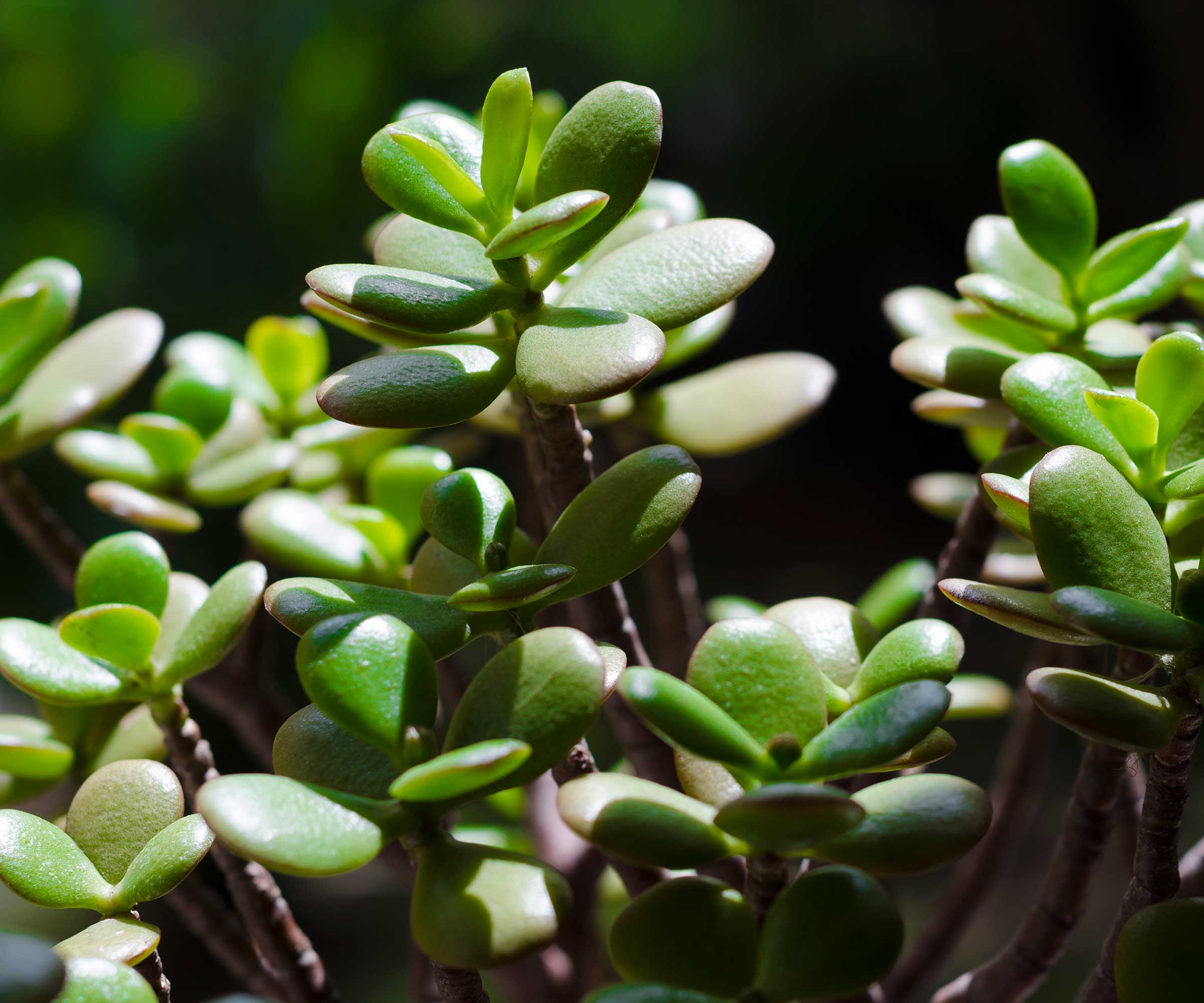
'Over-fertilization can also cause the plant to droop. When too much fertilizer is applied, excess fertilizer salts in the soil can keep the roots from pulling up the moisture they need,' warns Justin. This will stress the plant, causing droop.
During winter, when the plant’s growth slows, it's crucial to reduce or stop fertilizing, as jade plants require fewer nutrients in their dormant period.
Properly timed fertilization with the appropriate quantities will prevent nutrient imbalances, preventing the plant from dropping.
6. Extreme temperatures
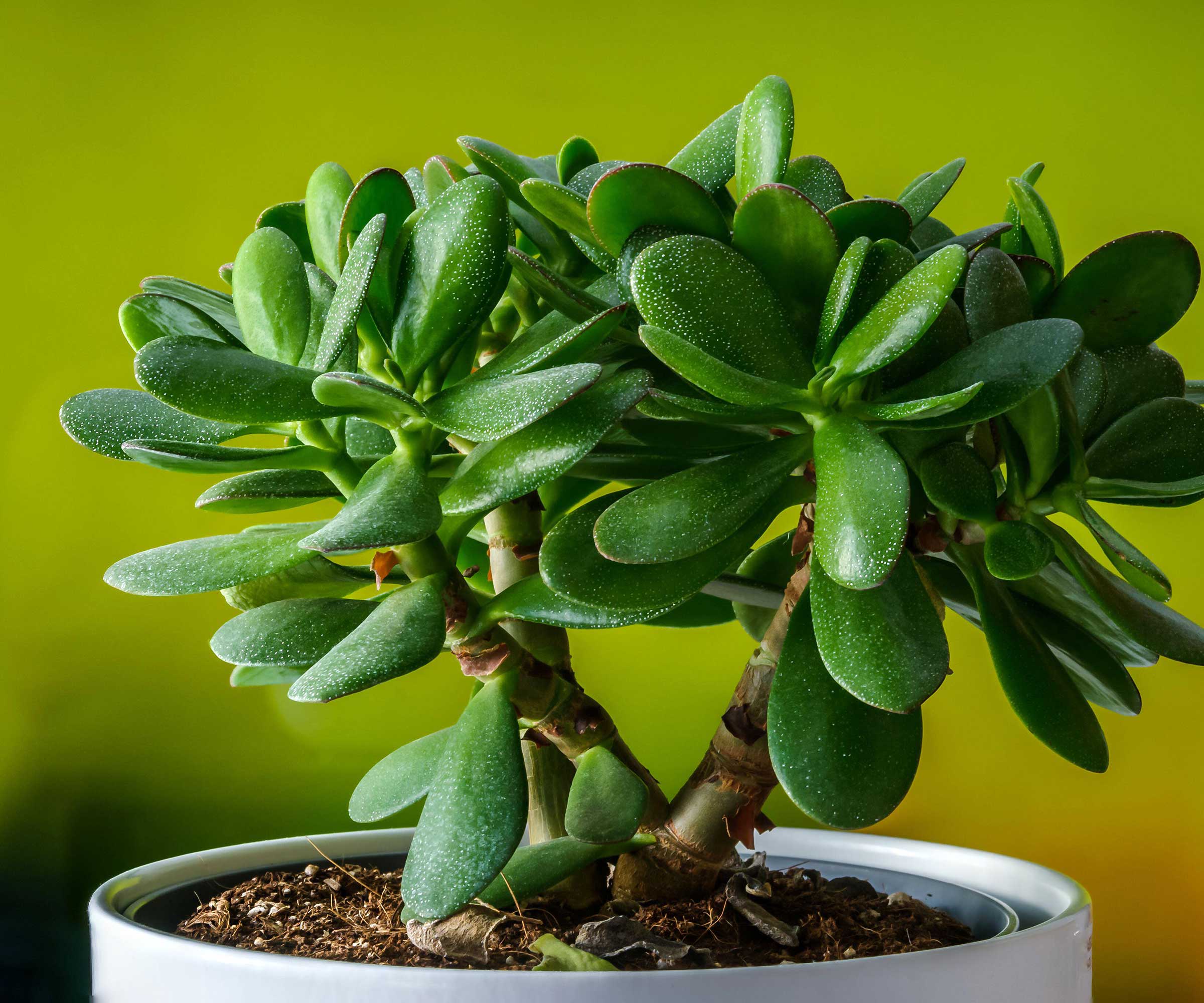
Another factor that can cause jade plants to droop is extreme temperature – either hot or cold. Jade plants prefer temperatures between 65°F and 75°F.
If jade plants are exposed to temperatures lower than 50°F for prolonged periods, the plant can experience cold stress. This can result in wilting or drooping leaves as the plant's metabolic processes slow down and it struggles to take up water.
Conversely, temperatures above 80°F can cause them to lose moisture faster than they can absorb it, resulting in droopy leaves and a dehydrated appearance.
Monitor and adjust the temperature to ensure your plant remains healthy. If you can't do much to change the temperature where your plant is, consider relocating it, placing it instead in a bright location away from cold drafts, air conditioning vents, or radiators. During particularly cold spells, you can use a heat mat specifically designed for plants, such as this one from Amazon to help maintain a stable soil temperature without overheating the plant.
7. Root-bound stress

'As one of the best fast-growing succulents it’s common for jade plants to outgrow their containers over time. If your jade plant has been in the same pot for years, it’s likely root-bound, which can lead to root-bound stress,' explains Matthew Wilson, houseplant expert, horticulturist, and CEO at Handy Gardeners.
‘Jade plants droop a little temporarily when they are under a lot of stress,' adds Justin Hancock. 'Repotting a stressed plant, for example, can cause some wilting as it adjusts to its new environment.'
Understanding when and how to repot a jade plant successfully can help mitigate this stress. While some temporary drooping may occur during the process, proper techniques will ensure it recovers quickly and encourage healthy growth.
If you notice pests on your jade plant, they could also be the culprit behind its drooping and overall decline. The most common pests that affect jade plants include aphids, mealy bugs, spider mites, and scale bugs. To effectively manage and deter these pests, consider using neem oil on the plant to control the infestation without harming the plant.







